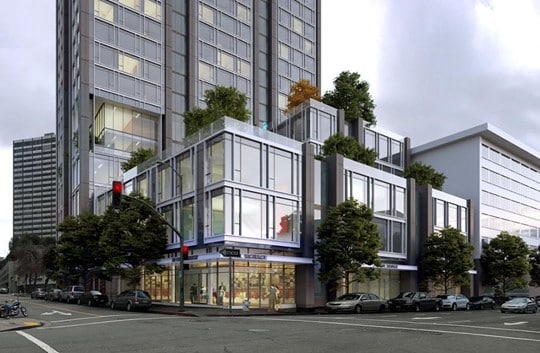Wind Tunnel Testing USA
2044 Franklin Street, California
Wind tunnel testing is a vital component in building design and construction, particularly in areas prone to high winds. In this case study, we discuss the wind study conducted at 2044 Franklin Street in California, using Windtech’s state-of-the-art wind tunnel facilities.
Wind Engineering Methods Implemented
Windtech’s boundary layer wind tunnel was employed for the wind tunnel test. This wind tunnel features a 10ft wide working section and a 46ft fetch length. A 1:400 scale model of the development was utilised. This model encompassed the land topography and surrounding buildings within a 1640ft radius. Measurements were taken at 38 critical study locations for 36 wind directions at 10-degree increments. Peak gust and mean wind speeds were assessed at selected critical outdoor trafficable locations, including nearby blocks and the Kaiser Rooftop Garden.
Challenges Faced During the Process
There were several challenges faced throughout this project, including:
1. Incorporating impermeable canopies/awnings and large evergreen trees into the development model.
2. The exclusion of other vegetation types, in line with AWES (2001) and ASCE (2012) guidelines, added complexity to the wind tunnel test.
3. Ensuring accurate results, which required precise testing execution.

Fig. 1 – Rendering of proposed tower at 2044 Franklin Street, Oakland, California
Solution
Windtech’s skilled engineers addressed these challenges by meticulously conducting the wind tunnel test. The development model was based on architectural drawings, including impermeable canopies/awnings and large evergreen trees. Other vegetation types were excluded per AWES (2001) and ASCE (2012) guidelines. Wind speed measurements were compared against the Wind Hazard Threshold prescribed by the California Environmental Quality Act (CEQA). A cumulative scenario case was tested to account for surrounding future developments and their impact on pedestrian wind comfort.
The wind tunnel study completed for the development at 2044 Franklin Street in California successfully demonstrated that wind conditions at all 38 study points were below the City of Oakland’s CEQA Wind Hazard Threshold. Windtech’s experienced engineers were well-equipped to handle challenges that arose during the sophisticated wind tunnel testing process, ensuring accurate results.
Need help with an upcoming project? Don’t hesitate to contact our dedicated Global Wind Engineering team, who will gladly assist. With offices in Sydney & Melbourne, Australia, London, UK, and Mumbai, India. New York & Miami, USA, Dubai, Hong Kong & Singapore, we guarantee to support you wherever you are based.


